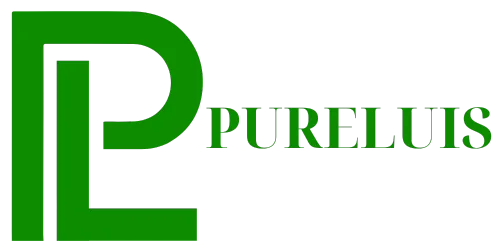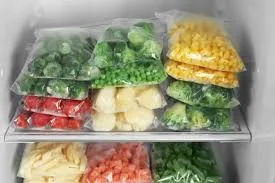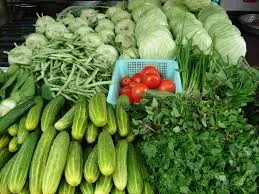News
The Next Generation of Clean: Pureluis’s Commitment to Sustainable Sourcing and Ethical Practices
The mission of Pureluis has always been clear: to provide the cleanest, freshest food possible. But that mission is incomplete if the way we source our food hurts the planet or exploits the people who work the land. The next generation of “clean” requires a commitment to sustainability, ethics, and social responsibility that is verifiable and transparent.
This guide outlines our public commitment to these principles. We go beyond vague promises, detailing the specific programs and auditing methods we use to ensure that every purchase you make supports a healthier planet and fairer communities.
1. Defining Our Purpose: Clean Food for a Clean Planet
Sustainability is not a separate department at Pureluis; it is built into our core operating principles—from the seed we support to the packaging we deliver in.
1.1. The Three Pillars of Pureluis Sustainability
Our commitment is balanced across three essential dimensions. We believe true sustainability fails if any pillar is ignored.
1.1.1. Environmental Stewardship
This pillar focuses on planetary health: minimizing our use of resources (water, energy), eliminating harmful outputs (chemical waste, carbon emissions), and promoting farming methods that actively regenerate the land (soil health).
1.1.2. Social Responsibility (Ethics)
This pillar focuses on people: ensuring fair labor practices, safe working conditions, ethical treatment of animals, and investing in the local communities where our food is sourced.
1.1.3. Economic Resilience
This pillar focuses on long-term viability: building a stable, diversified supply chain that can withstand external shocks (like climate change or economic downturns) so we can continue providing clean food reliably for decades to come.
1.2. Moving Beyond “Greenwashing”: Our Commitment to Verifiable Action
We understand that customers are tired of vague, feel-good marketing slogans. Our commitment is backed by measurable metrics and transparent audits.
- Specific Metrics: We will provide customers with quantifiable data—such as the percentage reduction in water usage achieved by our farming partners or the percentage of our fleet that runs on low-emission energy.
- Third-Party Verification: We rely on external, accredited auditors to confirm compliance with labor standards and environmental practices, ensuring our reports are unbiased and accurate.
2. Environmental Stewardship: Protecting the Earth We Harvest From
The environmental impact of farming is significant. Our strategy is focused on actively reducing negative impacts and promoting restorative practices across our supply chain.
2.1. Water Management: The Crucial Resource
Clean water is essential for clean food. We treat water conservation as a non-negotiable metric for our farming partners.
2.1.1. Auditing Water Usage in Partner Farms (The Metrics)
We require all verified farms to submit detailed reports on their water sources and usage. We track the metric of “Liters of Water Used per Kilogram of Produce.” Farms that show continuous improvement toward lower usage are prioritized in our purchasing decisions.
2.1.2. Promoting Drought-Resistant and Water-Saving Crops
We actively work with farmers to transition away from high-water-demand crops where possible. Furthermore, we support the implementation of modern, efficient irrigation systems like Drip Irrigation (which delivers water directly to the roots, reducing waste) over traditional, wasteful methods.
2.2. Soil Health and Regenerative Practices
Healthy soil is the foundation of clean food. Depleted soil requires chemical inputs, which is antithetical to our mission.
2.2.1. Reducing Chemical Inputs and Crop Rotation Audits
We mandate that our partner farms adhere to regenerative agriculture principles. This means using natural methods like Crop Rotation (changing the crop in a field each season to naturally replenish nutrients) and Cover Cropping (planting specific crops purely to improve soil fertility and prevent erosion when a field is fallow). These practices reduce the need for synthetic fertilizers.
2.2.2. Pureluis’s Soil Carbon Initiative
We are exploring programs to reward farmers for increasing the organic carbon content in their soil. Soil rich in carbon is healthier, more resilient to drought, and helps capture carbon dioxide from the atmosphere—a win for the environment and for food quality.
2.3. Waste Reduction and Circularity
We aim to eliminate waste at every stage—from the farm to the packaging that arrives on your doorstep.
2.3.1. Packaging Innovations (The Move to Compostable/Recycled Materials)
We are committed to a phase-out plan for all non-essential virgin plastics in our packaging. Our public target is to use 80% compostable, recycled, or recyclable packaging materials for all Pureluis products by 2028. This includes the elimination of single-use Styrofoam coolers in favor of reusable or cardboard alternatives.
2.3.2. Food Loss Management (From Farm to Customer)
Our Zero-Waste Food Donation Program (Section 9.1 from our Loyalty Guide) ensures food that is too ripe for sale but perfectly edible is immediately redirected to local food relief organizations. Furthermore, our “Ugly Produce” Utilization Program contracts with farmers to buy cosmetically imperfect, yet delicious, produce for use in our Value-Added product line (e.g., clean sauces and soups), preventing perfectly good food from being wasted.
3. Social Responsibility: People, Fair Wages, and Animal Welfare
The human element of our supply chain is as important as the environmental one. Ethics are fundamental to the “clean” promise.
3.1. Ensuring Fair Labor Practices (Auditing the Human Supply Chain)
We demand that every person involved in the Pureluis supply chain—from field workers to delivery drivers—is treated with dignity and fairness.
3.1.1. The Pureluis Fair Wage Guarantee for Farmers
We commit to paying our verified farmer partners a premium above the conventional market rate. This stabilizes their income, allows them to invest in better environmental practices, and ensures they can pay their workers a fair, living wage. This investment is an essential cost of clean sourcing.
3.1.2. Preventing Child Labor and Forced Labor
All partner farms and facilities must sign a legally binding agreement confirming adherence to strict labor laws regarding minimum age, working hours, and voluntary employment. These clauses are routinely checked through unannounced site audits conducted by external auditors who specialize in social compliance.
3.2. Community Investment and Education (Giving Back)
We believe in strengthening the communities we source from, ensuring they remain vibrant and resilient.
- Educational Support: We sponsor educational programs in rural farming communities focused on modern, sustainable agriculture techniques. This empowers the next generation of farmers to practice clean sourcing from the start.
- Local Sourcing Preference: We prioritize working with small, family-owned farms and local cooperatives over large, industrial operations, knowing that this practice reinvests capital directly into the local economy.
3.3. Upholding Strict Animal Welfare Standards
The ethical treatment of animals is crucial to our verified meat and poultry products.
3.3.1. The “5 Freedoms” Checklist for Meat and Poultry Sourcing
We require all meat and poultry suppliers to adhere to the internationally recognized “5 Freedoms” checklist: Freedom from Hunger and Thirst, Freedom from Discomfort, Freedom from Pain/Injury/Disease, Freedom to Express Normal Behavior, and Freedom from Fear and Distress. Our audits specifically check for adequate space, clean bedding, and natural light exposure.
3.3.2. Auditing Fisheries for Ethical Catching Methods
For our seafood products, we partner exclusively with verified fisheries that utilize sustainable and ethical catching methods that minimize bycatch (unwanted fish or marine life) and avoid practices that damage the marine environment (like deep-sea trawling). Our traceability system tracks the fishing vessel and the method used for every seafood batch.
4. Supply Chain Resilience and Long-Term Goals
Our commitment to clean food means building a supply chain that is stable, measurable, and prepared for the future.
4.1. The Carbon Footprint Reduction Plan
We are actively working to minimize the carbon emissions generated by getting food from the farm to your door.
4.1.1. Optimizing Last-Mile Delivery (Electric/Hybrid Fleets)
We have a public goal to transition 50% of our urban delivery fleet to low- or zero-emission vehicles (electric or hybrid) by 2026. For rural routes, we optimize vehicle capacity and routing efficiency to minimize fuel consumption per delivery.
4.1.2. Local Sourcing Mandates to Minimize Transport Emissions
Our “Local First” sourcing mandate is not just for freshness; it’s an environmental strategy. We prioritize partners within a tight geographical radius of our distribution hubs to minimize transport distance, directly lowering greenhouse gas emissions.
4.2. Building Climate Change Adaptability (Risk Mitigation)
Climate change presents operational risks. Our strategy focuses on resilience.
- Supplier Diversification: We maintain a broad network of verified suppliers across different climate zones to ensure that crop failure in one region (due to drought or flood) does not disrupt our entire supply of a core staple.
- Early Warning Systems: We invest in localized weather and climate data analytics to anticipate risks (like severe storms or prolonged heatwaves) and work with farmers to protect vulnerable crops or adjust harvest schedules accordingly.
4.3. 2030 Sustainability Milestones (Our Public Targets)
Verifiable commitment requires public accountability. These are our long-term goals.
- By 2028: 80% of all packaging materials will be compostable, recycled, or recyclable.
- By 2030: 100% of primary food waste will be eliminated from the Pureluis operational chain (through donations, composting, or utilization in value-added products).
- Ongoing: Maintain 100% compliance with our Fair Wage Guarantee across all verified farming partners.
5. Conclusion: Integrity Is Our Core Ingredient
The next generation of clean food is defined not just by what is excluded (pesticides, hormones) but by what is included (fairness, responsibility, and planetary health). The price you pay for Pureluis products reflects this commitment: an investment in a supply chain that is ethically sound, environmentally responsible, and economically resilient.
This verifiable, sustainable approach is the ultimate promise of Pureluis—ensuring that the clean food you trust today will be available for generations to come.
6. Technological Integration for Ethical Verification and Risk Mitigation
Our commitment to ethical and sustainable practices cannot rely solely on paperwork and yearly site visits. We use smart technology to monitor, verify, and predict risks in real-time, making our supply chain robust and our claims indisputable.
6.1. Leveraging IoT and Remote Sensing for Environmental Audits
The Internet of Things (IoT) and remote sensing tools allow us to monitor farming conditions continuously, offering a layer of verification that goes far beyond traditional audits.
6.1.1. Real-Time Water and Soil Monitoring
We install low-cost, connected sensors in the fields of our high-volume partners. These sensors track:
- Soil Moisture Levels: This data tells us instantly if a farm is over-irrigating (wasting water) or under-irrigating (stressing crops). This information is used to provide targeted advice to farmers on efficient water usage (Section 2.1).
- Nutrient Runoff (Initial Stages): Simple conductivity sensors can detect early signs of excessive fertilizer application, allowing us to intervene before large amounts of chemicals run off into local waterways, directly protecting the environment.
6.1.2. Satellite and Drone Imagery for Land Use Verification
We use satellite imagery and scheduled drone flights to visually verify land use practices without requiring a physical audit every week.
- Crop Rotation Verification: We can track the precise rotation of crops over seasons, ensuring farmers are adhering to the Regenerative Agriculture agreements (Section 2.2) designed to restore soil health.
- Deforestation Check: For new suppliers, this technology provides immediate verification that no sensitive land (like protected forests) has been cleared for cultivation, upholding our commitment to biodiversity.
6.2. Digital Tools for Social Compliance and Labor Ethics
Auditing labor practices can be challenging, but digital tools provide non-intrusive, continuous monitoring that reinforces our Fair Wage Guarantee (Section 3.1).
6.2.1. Digital Worker Feedback Systems
We utilize simple, anonymous digital platforms (accessible via basic mobile phones) for farm workers to provide feedback directly to Pureluis regarding working hours, conditions, and pay discrepancies.
- Why it Works: This system bypasses potential intimidation from management and provides an immediate, verifiable red flag if labor practices fall short of our ethical standards, allowing for rapid intervention.
6.2.2. Automated Payroll Verification (for Key Suppliers)
For our largest partners, we require a simplified, anonymized feed of payroll data. Our system checks this data against the mandated Pureluis Fair Wage Guarantee to ensure that all workers are being paid above the minimum ethical standard for the region. This turns a complex, once-a-year document check into a continuous compliance metric.
6.3. Climate Risk Modeling and Early Intervention
We use sophisticated data modeling to anticipate climate-related risks and build resilience into our sourcing (Section 4.2).
- Predictive Sourcing: We analyze long-term climate forecasts against the geographical location of our key suppliers. If models predict a high probability of drought in a specific region, we proactively increase sourcing volumes from diversified, lower-risk regions (our “Two-Route” strategy) several months in advance. This prevents supply shocks and stabilizes prices for the consumer.
- Disaster Preparedness Kits: For high-risk areas, we provide partner farmers with “disaster preparedness kits” covering things like emergency water storage solutions or tools for protecting crops against sudden, extreme weather events.
7. Economic Resilience: The Fair Price and Long-Term Partnership Model
Sustainability is only possible if it is economically viable for both the farmer and Pureluis. Our financial model is designed to support the integrity of our ethical supply chain over the long term.
7.1. Moving Away from Spot Pricing: The Fixed-Premium Contract
The conventional food market relies on “spot pricing”—buying food at the lowest possible price on the day of sale, which forces farmers to cut corners on labor and environmental practices. We reject this model.
- The 3-Year Fixed-Premium Contract: We offer our verified partners 3-year contracts with a guaranteed price premium above the market rate. This premium is the financial reward for adhering to our strict ethical and environmental standards.
- The Farmer’s Stability: This fixed, multi-year pricing gives farmers the financial stability and security they need to invest in long-term practices like regenerative agriculture (Section 2.2), knowing they will be paid fairly for the extra effort involved. This alignment of financial stability with ethical practice is core to our model.
7.2. The True Cost of Clean Food (Educating the Consumer)
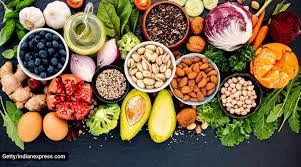
We need to openly communicate that ethical sourcing has a cost and that the consumer is making an investment in quality, not just a purchase.
- Transparency in Pricing: While we don’t share specific farmer contracts, we commit to showing customers the breakdown of the final product price. We can highlight the percentage of the cost dedicated to the “Fair Wage Premium” or “Sustainable Packaging Surcharge.” This validates the slightly higher price point and reinforces the integrity of the brand.
- Value of Longevity: We frame the cost difference not just as a better product, but as an investment that prevents waste. We reinforce that Pureluis products, verified for freshness and superior quality, have a longer usable life, often offsetting the initial cost difference (referencing our Preservation Guides).
7.3. Collaborative Innovation and Shared Investment
We view our financial relationship with suppliers as a partnership, sharing the cost and risk of transitioning to more sustainable methods.
- Seed and Input Subsidies: We offer joint investment programs where Pureluis subsidizes the cost of high-quality, non-GMO, drought-resistant seeds or specific organic fertilizers, making it financially easier for our partners to maintain high standards.
- Efficiency Rewards: We reward farms that achieve measurable improvements in resource efficiency (e.g., a reduction in water usage) with financial bonuses, tying performance directly to payment. This ensures the pursuit of sustainability is always profitable for our partners.
This comprehensive approach to technological verification and economic partnership proves that Pureluis views sustainability not as a cost center, but as the essential, long-term foundation of our entire business model.
8. Integrating the Commitment: Annual Transparency Reporting and Public Accountability
The final step in our sustainability journey is transparency. All the audits, technologies, and financial commitments we’ve outlined must be presented to our community in a clear, verifiable, and accessible way. This Annual Transparency Report (ATR) is the single most important document for maintaining long-term trust.
8.1. The Annual Transparency Report (ATR): Structure and Accessibility
The ATR is not just a marketing brochure; it is a public-facing audit of our performance against the goals outlined in this guide.
8.1.1. Simplified, Consumer-Facing Metrics
The report must translate complex data into simple, actionable insights. Instead of reporting “Soil Organic Carbon (SOC) levels,” we report “Percentage of Partner Farms Showing Improved Soil Health.” We avoid industry jargon and focus on the direct benefit to the customer and the planet.
- Key Reporting Metrics (Synthesis of All Pillars):
- Waste Diversion Rate: Percentage of operational waste (packaging, food loss) redirected from landfills. (Environmental)
- Fair Wage Compliance Rate: Percentage of supplier audits showing 100% adherence to the Pureluis Fair Wage Guarantee. (Social)
- Customer Traceability Rate: Percentage of customers who used the Batch ID system in the last year. (Economic/Trust)
- Carbon Intensity: Kilograms of emitted per order delivered. (Environmental/Economic)
8.1.2. Digital First and Accessible Reporting
The report must be easily accessible to every customer. It should live on a permanent, dedicated section of the Pureluis website. We will use interactive elements (like charts and short video interviews with audited farmers) to keep the data engaging and understandable. The full, detailed audit documents will be available as downloadable appendices for those who want the technical proof.
8.2. Public Accountability: Goals and Course Correction
A trustworthy report highlights successes but also openly discusses failures and areas needing improvement. This humility builds deep loyalty.
8.2.1. The “We Missed the Mark” Section
This section is perhaps the most important. If we fail to hit a public milestone (e.g., the reduction target or the packaging goal), we must openly explain why it happened (e.g., “A critical supplier for compostable materials failed their quality check”) and detail the concrete steps being taken to correct the failure in the next 12 months. This demonstrates integrity and proactive management.
8.2.2. Linking the ATR to Customer Behavior
We will integrate the ATR data back into the customer experience. For example, the website will show customers how their purchasing behavior contributes to the overall success metrics (e.g., “Your last five orders contributed to pounds of food being diverted from waste!”). This reinforces their role as active participants in the Pureluis mission.
8.3. The Future of the ATR: Verification Through the Community
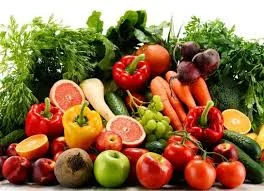
The ultimate goal is to make the ATR a collaborative effort with our community.
- Ambassador Feedback Panel: Engage our highest-tier Ambassadors (Section 3.1) in the review process of the preliminary ATR data. Asking for their feedback and integrating their suggestions into the final report strengthens their sense of ownership and validates the report’s integrity.
- Technology for Continuous Reporting: Move towards a dynamic reporting dashboard (instead of a single annual PDF). This dashboard, powered by the technological integrations (Section 6), would show near-real-time updates on key metrics like Fair Wage compliance or current Waste Diversion Rates. This continuous transparency elevates the brand above all competitors who only report once a year.
By institutionalizing this annual, verifiable transparency, Pureluis cements its commitment to sustainability as the permanent, core driver of its business, securing a lasting community built on absolute trust.
